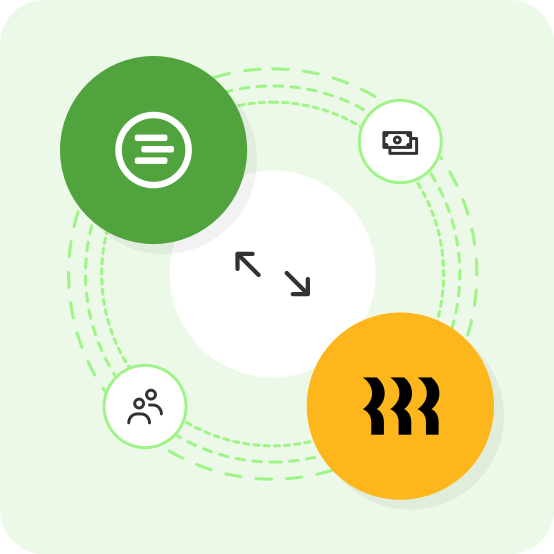What Are Employee Payroll Reports?
Try When I Work for free
Managing a small business means wearing a lot of hats. One of the most important tasks on your plate involves generating employee payroll reports, which detail documents that help you cross-check financial data and verify tax liabilities.
Key takeaways
Here are some of the most important things you need to know about employee payroll reports:
- They help you identify errors in payroll processing
- They mitigate compliance risks
- Great reports can lead to long-term cost savings
- Manually generating reports is inefficient and frustrating
- Full-service payroll software makes running reports a breeze
Now, let’s dive deep into employee payroll reports and explore.
Table of contents
- What are employee payroll reports?
- How do they work?
- What other types of payroll reports exist?
- Why are employee payroll reports important?
- Common challenges with employee payroll reporting
- Using When I Work for streamlined employee payroll reporting
What are employee payroll reports?
Employee payroll reports are records that detail the wages you pay your staff. They include information like:
- Hours worked
- Gross pay
- Deductions
- Net pay
- Overtime billed
- Taxes deducted
Think of them as a financial report card. They break down where your business’s money is going. More importantly, they help you track trends and identify sources of waste.
You can run employee payroll reports at different frequencies, including:
- Weekly
- Bi-weekly
- Monthly
- Quarterly
- Annually
While it’s good to run an annual report, you also need to create several reports throughout the year. This will help you track payroll trends and overall wage spending. That said, the timing should be tailored to the needs and complexity of your company.
How do they work?
Typically, you’ll generate an employee payroll report every time to divvy out wages. They ensure you’re paying your team correctly and following tax laws. But remember, you can choose intervals that work for your business. Each report uses employee data to calculate the following:
- The total amount paid to each employee
- Taxes and deductions
- Cumulative wage spend
If you’ve got full-service payroll software, you can set up automated reports. This means that the app will run new reports every time you process payroll. Sound easy? That’s because it is!
However, if you’ve got old-school reporting tech (or none at all), you’ve got to run reports manually. That can be frustrating. Even worse, manual reports are prone to errors. That’s because your team has to track down data, transfer it manually, and hope they got everything right.
Add a payroll integration to save more time! Learn more about our available integrations and see how you can simplify scheduling and payroll for your team.
What other types of payroll reports exist?
The term “employee payroll reports” is a broad phrase. Typically, it refers to standard reports that detail the total wage expense and tax deductions. However, there are several variations of payroll reports you can use to understand your finances, including:
Company-specific payroll reporting
These are used for internal purposes and are tailored to your company’s unique needs. For instance, you can run department-specific reports, overtime reports, and more. If you want to learn more about a particular payroll expense, run a custom report.
Small businesses with fewer than 10 employees rarely use these types of reports. That’s not to say you can’t use them, but it probably won’t reveal much you don’t already know. However, if your company is a bit bigger, these reports can help you identify specific cost-saving opportunities.
Federal payroll reports
Federal payroll reports are required by the U.S. government. They list tax withholdings and contributions to programs like Social Security.
While all payroll reports are important, these are especially so. Failing to deliver these reports on time can lead to compliance issues. That’s the last thing you want on your plate.
State payroll reports
Similar to federal reports, these reports are required. Each state has different reporting requirements, though. Make sure to brush up on the laws in your state.
Also, remember these are filed separately from federal reports. They might have different deadlines, too. Make sure you set yourself a reminder and keep up with important filing deadlines.
Payroll tax reports
These reports detail the taxes withheld from employee paychecks and your company’s tax liabilities. You should run these at least quarterly to avoid any end-of-year surprises.
Why are employee payroll reports important?
While you have great instincts, you rely on data to guide your key business decisions. Employee payroll reports help you apply this same level of discipline to your wage expenses. Prioritizing quality employee payroll reports helps you unlock benefits that:
Supports budget allocation
Budgeting is the backbone of your business. Employee payroll reports provide the clarity you need to budget effectively.
By clearly showing what portion of your revenue goes to wages, these reports help you make informed decisions about future spending. You can identify areas of waste. You’ll also be able to pinpoint opportunities.
Essentially, these reports act as your financial map. When you combine them with other reports, you can determine the best path forward for your business.
Provides employee data
Employee payroll reports provide key team data. You can use them to track dependent selections, addresses, and more. However, gathering the data for your reports can be tedious unless you’ve got all-in-one employee management software at your fingertips.
Apps like When I Work are loaded with tools to make your life easier. With When I Work, you can send in-app messages, replace your old-school time clock, and manage all payroll data in one place.
From top to bottom, When I Work is made to simplify employee payroll reporting. It also promotes data transparency, helping you stay in the know. But you aren’t the only one who can use When I Work to stay in the loop. The employee app keeps your team apprised of schedule changes, time-off confirmations, and more.
Simplifies tax reporting
No one enjoys tax season. But with accurate payroll reports, you can make filing taxes much easier.
These reports ensure that all necessary wage information is on hand. If you get audited, you’ll be able to provide essential documents fast. You can also minimize the risk of compliance issues or fines.
Taxes are never going to be a breeze. However, mastering employee payroll reports will make them a whole lot easier.
Common challenges with employee payroll reporting
There are lots of potential challenges with employee payroll reporting. One of the biggest hurdles you’ll encounter involves keeping up with tax laws.
On their own, federal tax laws are tricky. But they aren’t the only rules you need to know. You’ve also got to follow state tax laws and in some cases, local ones. Missing a single deadline can lead to fines, audits, and frustration.
Therefore, you need to reach out to an experienced business tax pro. They’ll help you keep all your finances in order and stay compliant.
When I Work preferred payroll partner
Make payroll simple with our preferred partner Rippling, an all-in-one platform for payroll, benefits, and compliance. Together, When I Work and Rippling help you save hours every week while reducing errors, staying compliant, and getting your team paid on time.

Another hurdle is managing varying employee hours and pay rates. If you have a small team, managing pay rates and hours is pretty easy. However, managing as few as 8-10 employees with different hourly rates can be a nightmare.
The final challenge you’ll encounter is ensuring data accuracy. Simply keeping up with your data can be hard enough. Verifying that all your numbers are correct is even more difficult.
To minimize accuracy issues, consolidate your data. Instead of relying on a bunch of disconnected apps, use an all-in-one platform. Solutions like When I Work keep all your payroll data in one place. That means you won’t have to go on any more information scavenger hunts to run reports.
Using When I Work for streamlined employee payroll reporting
When I Work also offers several pricing options. No matter how many people you’ve got on your team or what size your business is, we’ve got you covered. You pay by the user, which keeps costs in check.
When I Work integrates seamlessly with payroll providers to save you even more time. Our payroll integrations, especially the one to our preferred partner, Rippling, help you connect scheduling and payroll in one streamlined workflow, so you can focus on running your business, instead of reconciling timesheets.
Are you ready to experience the When I Work difference for yourself? Sign up for a free trial today and take the hassle out of payroll reports.






